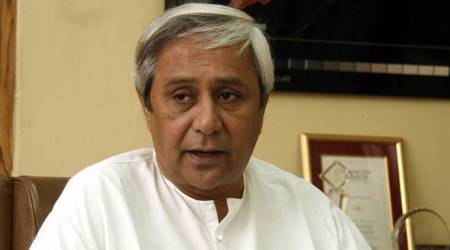Cryptocurrency prices are plummeting. A so-called stablecoin lost all its value in a matter of days. A newfangled crypto bank halted withdrawals. And investors have been plunged into financial ruin.
Now the crypto industry is grappling with an even grimmer prospect: The worst may be yet to come.
Best of Express Premium
 Premium
Premium Premium
Premium Premium
Premium Premium
PremiumConcern is mounting over another potential vulnerability in the crypto market: Tether, a company whose namesake currency is a linchpin of crypto trading worldwide. Long one of the most scrutinized companies in the industry, Tether is facing heightened pressure from regulators, investors, economists and growing legions of skeptics, who argue it could be another domino to fall in an even bigger crash.
“Tether is really the lifeblood of the crypto ecosystem,” said Hilary Allen, a finance expert at American University. “If it imploded, then the entire facade falls down.”
Tether is the dominant issuer of stablecoins, a type of cryptocurrency pegged to a stable asset such as the US dollar. Unlike traditional cryptocurrencies such as Bitcoin and Ether, whose monetary value can fluctuate widely, stablecoins are typically designed to maintain a constant price of $1 and are backed by large reserves of funds or other financial engineering. That consistency allows crypto traders to conduct safe, predictable transactions without relying on banks or other financial gatekeepers.
But many of these coins are stable in name only. Last month, when cryptocurrencies melted down, the crash was triggered partly by the failure of TerraUSD, a stablecoin with a $1 peg that was algorithmically linked to a sister cryptocurrency called Luna. When the price of Luna plummeted, TerraUSD also fell, creating a “death spiral” that shook the broader market.
By contrast, Tether claims its stablecoins are backed by cash and other traditional assets, making its reserves essential to the health of the crypto market. In theory, anyone who wants to exchange Tethers for US dollars can do so quickly and easily.
But the company’s financial statements show that a significant portion of its reserves are tied up in unsecured corporate debt known as commercial paper. Such financial instruments are riskier and harder to quickly convert into cash, especially during financial turmoil. In 2021, New York’s attorney general fined Tether $18.5 million and said the company had lied about its reserves, calling it “a stablecoin without stability.”
Critics say Tether basically acts as a loosely regulated bank. Traders hand over millions of dollars and, in return, receive millions of stablecoins, which they use to bet on more volatile cryptocurrencies such as Bitcoin or Dogecoin. Tether currently has 70 billion coins in circulation, making it more than three times the size of TerraUSD before the crash.
In a worst-case scenario, critics say, a downturn could spark the crypto equivalent of a bank run. Traders might all rush to exchange their Tethers for dollars, only to discover that Tether could not fulfill those orders. Investors would lose billions of dollars, forcing them to sell their other crypto holdings, causing a potentially devastating panic that might spill into noncrypto markets.
Tether got a taste of that scenario last month. As cryptocurrencies plummeted, a flood of investors asked to exchange their Tethers for dollars, forcing the company to pay out about an eighth of its reserves, or $10 billion, over the course of a week and a half. On cryptocurrency exchanges, Tether briefly wavered from its $1 peg.
In the end, the company said, it met the demand. Tether went on a victory lap, proclaiming it had weathered the crisis “flawlessly.”
The crash was “the best story that could have happened to Tether,” Paolo Ardoino, the company’s chief technology officer, said in an interview. “We’re not fooling around, and we take risk management extremely seriously.”
Then on Sunday, the crypto bank Celsius Network announced it was halting withdrawals, causing digital currency prices to crash again. Tether had invested in Celsius in 2020 and lent it about $1 billion in Tethers, according to Bloomberg News; the company said this week that it currently had “zero exposure” to Celsius apart from a small investment. Still, as the market reeled, investors pulled out about $1.6 billion from Tether.
More skeptics are speaking up. Last month, a top US banking official called for new rules governing Tether and its competitors, saying the TerraUSD crash highlighted the risks of loosely regulated stablecoins. Some traders are now putting their funds into alternate stablecoins, amid fears that the next crash could test whether Tether has adequate reserves.
“They had enough collateral to weather this run, but that doesn’t mean they have enough to weather the next run,” said Bruce Mizrach, an economics professor at Rutgers University who studies cryptocurrencies.
Even by crypto’s often-surreal standards, Tether has a peculiar history. The company was founded in 2014 by Brock Pierce, a cryptocurrency evangelist who, as a child actor, starred in the “Mighty Ducks” movies. He and his partner, Reeve Collins, later handed control of the firm to a former plastic surgeon named Giancarlo Devasini, who has stored some of Tether’s assets in a bank in the Bahamas run by one of the creators of the “Inspector Gadget” cartoon.
Tether has grown rapidly. Last year, it issued roughly 50 billion stablecoins, more than tripling the worldwide supply. “If we have to redeem till the last cent, we can do it,” Ardoino said in the interview.
The company is operated by about 50 employees in Europe, Asia and Latin America. Its CEO, JL van der Velde, is a Dutch businessman whose LinkedIn profile suggests he is based in Hong Kong; the company declined to confirm his location. He and Devasini, the chief operating officer, rarely speak publicly. Tether’s public face is Ardoino, who describes his colleagues as “normal people” amazed by the company’s growth.
“They didn’t think initially that it would maybe go so big,” Ardoino said. “They weren’t prepared to be public persons. There’s nothing bad about it.”
At times, Tether has maintained that its stablecoins were fully backed by US dollars. But last year, New York Attorney General Letitia James called those claims “a lie.”
A few years earlier, a cryptocurrency exchange affiliated with Tether had lost $850 million in a business deal gone sour. To cover the losses, the exchange, Bitfinex, took loans from Tether’s reserves, leaving the stablecoin partly unbacked, according to James’ investigation.
Tether settled with the New York attorney general, paying $18.5 million in penalties without admitting wrongdoing. A Tether spokesperson said the issue with the company’s reserves boiled down to a “communications misstep.”
In October, the Commodity Futures Trading Commission found that over a 26-month “sample period” between 2016 and 2018, Tether had held sufficient reserves in its accounts only a quarter of the time. The company paid a $41 million fine to the commission.
Since the New York settlement, Tether has issued periodic statements disclosing the composition of its reserves. But its announcements have done little to quash skepticism.
Last month, Tether revealed that about one-quarter of its reserves, or $20 billion, consisting of commercial paper, down $4 billion from February. At the same time, it increased its exposure to money market funds, which may invest in commercial paper, to about $7 billion from $3 billion. Tether also revealed that $5 billion of its reserves were tied up in “other investments,” including digital currencies. Critics argued that the report was essentially a wash, with the project still lacking the kind of stability that many investors expect.
(The Tether spokesperson said the company’s commercial-paper portfolio would “gradually decrease to zero without any incurrence of losses.”)
Tether remains by far the most popular stablecoin. But over the past month, the number of Tethers in circulation has declined more than 7%. The circulation of USDC, a stablecoin that is supposedly fully backed by cash and US Treasurys, has increased roughly 4%.
“I can’t say I’m as confident about Tether as I am with USDC,” said Sam Kazemian, who runs Frax, another stablecoin project.
Concerns about Tether has spread to Washington. When Treasury Secretary Janet Yellen tested before Congress last month, she noted Tether’s wavering from its $1 peg and called for greater regulation of stablecoins.
The growth of stablecoins presents “the same kind of risks that we have known for centuries in connection with bank runs,” she said.
Ardoino said Tether was eager to work with regulators to devise a global framework governing disclosures that stablecoin issuers must make about their reserves. But Tether has resisted more aggressive proposals, which would subject it to regulatory requirements such as those of traditional banks.
“Everyone’s freaking out — like, ‘I lost my life savings,’” said Collins, who founded Tether with Pierce and now runs a crypto venture called BLOCKv. “That’s a tragedy, but it’s just as much of a tragedy when someone says, ‘I went to a casino and lost my life savings.’ But that doesn’t mean let’s regulate casinos out of existence.”
This article originally appeared in The New York Times.
